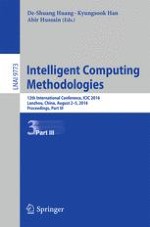This book - in conjunction with the double volume set LNCS 9771 and LNCS 9772 - constitutes the refereed proceedings of the 12th International Conference on Intelligent Computing, ICIC 2016, held in Lanzhou, China, in August 2016.
The 221 full papers and 15 short papers of the three proceedings volumes were carefully reviewed and selected from 639 submissions. The papers are organized in topical sections such as signal processing and image processing; information security, knowledge discovery, and data mining; systems biology and intelligent computing in computational biology; intelligent computing in scheduling; information security; advances in swarm intelligence: algorithms and applications; machine learning and data analysis for medical and engineering applications; evolutionary computation and learning; independent component analysis; compressed sensing, sparse coding; social computing; neural networks; nature inspired computing and optimization; genetic algorithms; signal processing; pattern recognition; biometrics recognition; image processing; information security; virtual reality and human-computer interaction; healthcare informatics theory and methods; artificial bee colony algorithms; differential evolution; memetic algorithms; swarm intelligence and optimization; soft computing; protein structure and function prediction; advances in swarm intelligence: algorithms and applications; optimization, neural network, and signal processing; biomedical informatics and image processing; machine learning; knowledge discovery and natural language processing; nature inspired computing and optimization; intelligent control and automation; intelligent data analysis and prediction; computer vision; knowledge representation and expert system; bioinformatics.
